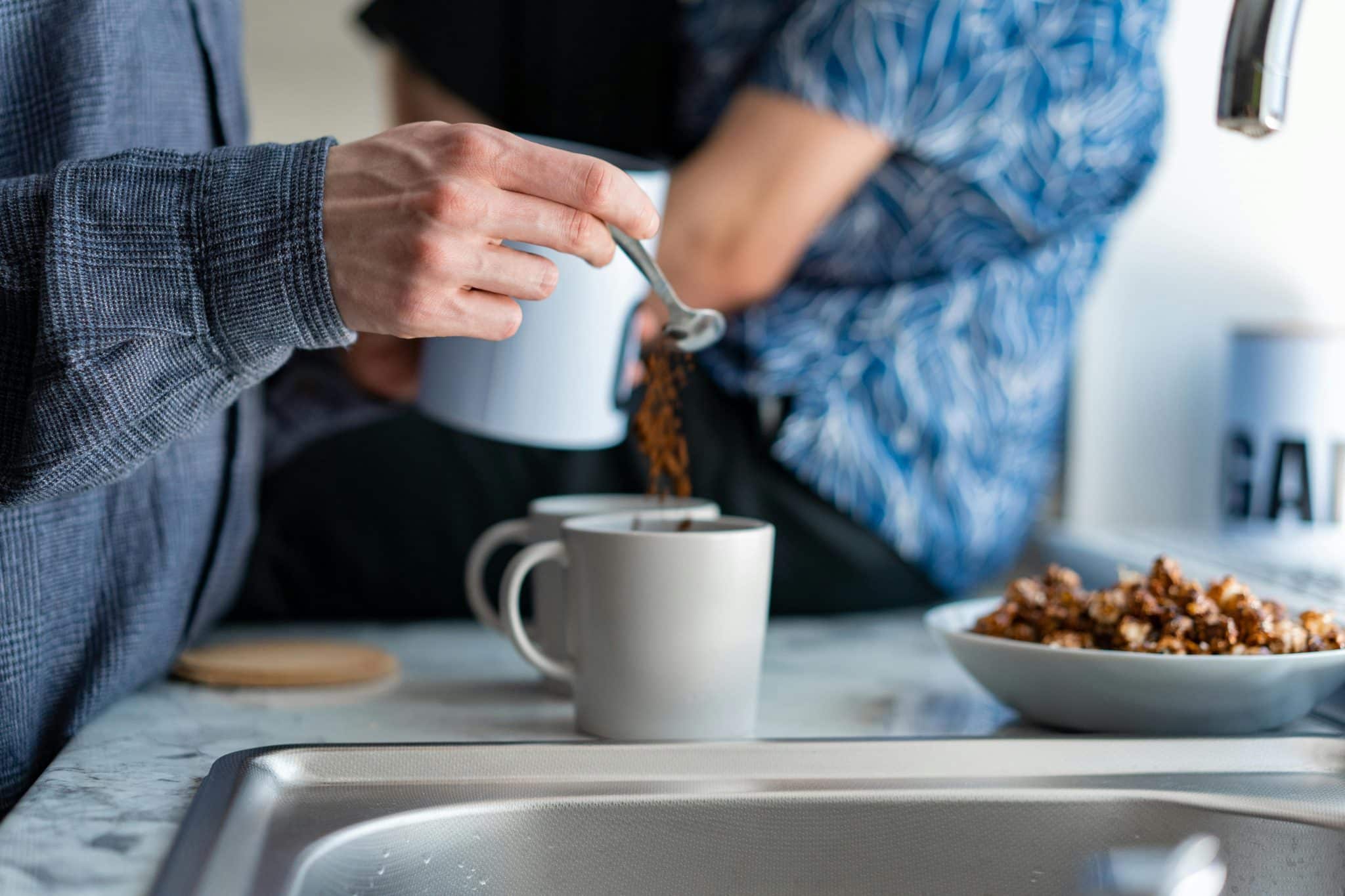If you’ve ever taken a sip of your favorite drink and thought, “Why does this taste different today?”, you’re not imagining it. Taste isn’t fixed, it changes with every small variation in ingredients, temperature, and preparation. Drinks are complex chemical systems influenced by everything from water quality to serving method. Even the slightest adjustment in how you brew, mix, or store a drink can lead to a completely new taste experience.
This is especially true for coffee lovers exploring different blends, like those found on the 7 Brew Menu, where each drink has its own unique flavor profile. Factors such as brewing method, grind size, and water temperature all affect how flavors extract and combine. Understanding these variables helps explain why no two drinks, even from the same recipe taste exactly alike.
1. Ingredients and Their Variability
The ingredients you use form the foundation of every drink, and their natural variability is one of the biggest reasons for taste differences. Coffee beans harvested from different regions develop distinct flavors based on soil, altitude, and climate. Similarly, the ripeness of fruit, the quality of milk, or the type of sweetener can all subtly shift the overall flavor balance. Even when using the same brand, differences in production batches or freshness levels can result in noticeable variations.
Water quality is another critical factor often overlooked. Because water makes up most of your drink, its mineral content and pH level dramatically affect extraction and mouthfeel. Hard water can emphasize bitterness, while softer water may enhance sweetness and clarity. When combined, all these small ingredient differences create a ripple effect that changes your drink’s flavor every time.
2. Ratios, Extraction, and Technique

The way you prepare a drink is just as important as what goes into it. Small adjustments in ratios like the amount of coffee to water or milk to espresso alter strength and flavor intensity. Extraction time, grind size, and water temperature all work together to shape the taste. A finer grind or longer brew time extracts more bitter compounds, while a coarser grind or shorter contact time produces a lighter, fruitier result.
Temperature plays a central role too. Water that’s too hot can scorch delicate ingredients and produce harsh notes, while cooler water may leave your drink underdeveloped and sour. Even something as simple as stirring technique, shaking duration, or the order in which ingredients are mixed can influence the final outcome. These small procedural changes explain why consistency in brewing technique is key to achieving a repeatable flavor.
3. Equipment and Maintenance
Your equipment can either elevate or ruin a drink’s potential. Machines like grinders, blenders, or espresso makers must be properly calibrated to maintain consistency. Even a minor difference in grind size, pressure, or temperature setting can shift how flavors develop. Cleanliness matters too: leftover residue, oils, or mineral buildup can add bitterness or off-flavors.
The type of material used in your brewing or serving equipment also affects taste. Ceramic or glass preserves clarity and aroma, while metal or plastic can react with acids or retain smells. Maintaining clean, well-calibrated equipment ensures that the flavors you taste are true to the ingredients themselves, not leftover traces from previous brews.
4. Serving Temperature and Vessel
Temperature isn’t just a technical factor, it changes how we experience flavor. Warm drinks enhance sweetness and aroma, while colder drinks highlight acidity and bitterness. This is why an iced latte can feel sharper than a hot one, even if both are made with the same ingredients.
The vessel you use can also subtly alter perception. A narrow cup traps aroma closer to your nose, intensifying flavor, while a wide glass disperses it. The insulation level of your cup affects how long the drink stays within its ideal temperature range. Over time, as the drink cools or warms, your sensory experience evolves, making each sip feel a little different from the last.
5. Time and Oxidation
Time changes every drink, even after it’s been served. Once exposed to air, oxygen begins reacting with aromatic compounds, causing oxidation that dulls brightness and freshness. In coffee, this can lead to a stale or bitter taste within minutes. The same applies to tea, juices, and even cocktails, as they sit, flavor compounds continue to interact and transform.
Dilution is another time-related factor. Melting ice in cold drinks or gradual cooling in hot ones affects concentration and mouthfeel. A drink that tastes balanced at first might feel watery or flat later, not because it was made differently, but because time has altered its structure.
6. Human Factors: Physiology, Psychology, and Context
Your perception of flavor is highly personal and ever-changing. Factors like mood, hunger, hydration, and even time of day influence how sensitive your taste buds are. After several sips, your palate adapts, reducing sensitivity to certain notes. What tasted strong or sweet at first might feel milder later on.
Psychology also plays a huge role. Expectations and environment shape perception, if you believe a drink will be bitter or sweet, your brain interprets it that way. Even lighting, background noise, and the company you’re with can change how you perceive flavor. Because so much of taste comes from smell, a blocked nose or fatigue can make your drink seem bland, even when prepared perfectly.
7. Environmental and Situational Variables
The environment around you affects your experience more than you might realize. Humidity, altitude, and air temperature influence how ingredients react and how aromas release. At higher altitudes, water boils at lower temperatures, which can alter extraction levels in brewed drinks. Strong ambient scents or smoke in the air can mask delicate aromas.
Even background noise impacts taste. Research shows that loud environments can suppress sweetness and amplify bitterness. These subtle external cues, combined with physical and emotional factors, make each drinking experience unique — even when the recipe remains unchanged.
8. How to Make Your Drink Taste the Same Every Time
Achieving consistency means controlling variables as much as possible. Always measure ingredients precisely, use filtered water, and monitor brewing temperature carefully. Keep your tools clean and your methods consistent, the same grind, same timing, same ratio. Store ingredients in airtight containers and protect them from heat, light, and moisture to preserve freshness.
Documenting your process helps immensely. Record ratios, brew times, and even environmental notes. Over time, you’ll identify patterns that reveal which factors most affect your drink’s flavor. This habit not only improves consistency but also deepens your understanding of taste itself.
9. Troubleshooting Common Taste Problems
If your drink tastes bitter, it’s likely over-extracted, try using a coarser grind or shorter brew time. If it’s too sour, increase the brewing temperature or extend extraction slightly. A flat taste often points to stale ingredients or poor water quality. When you detect metallic or off-flavors, check your equipment for buildup or residue.
Learning to recognize these patterns allows you to correct them systematically. With practice, you’ll develop an instinct for fine-tuning drinks so they taste balanced and consistent every time.
10. The Science Behind Flavor Perception

Flavor perception combines biology and chemistry. Retronasal olfaction, the process of aromas traveling through your nose from the back of your throat, contributes most of what we call “taste.” Cross-modal perception means that color, texture, and even sound influence how flavor feels. For instance, a thicker, creamier drink often seems sweeter even when sugar content stays the same.
Individual biology also matters. Age, genetics, medications, and diet all affect sensitivity to different flavors. This is why two people can drink the same beverage and describe it in completely different ways.
11. Practical Example: Consistent Brewing
To achieve reliable results at home, try a pour-over coffee ratio of 16 grams of coffee to 260 grams of water heated to around 94°C. Let it bloom for 30 to 45 seconds, then complete the brew in about three minutes. Logging these details ensures you can replicate or adjust based on your taste preferences. Even slight changes in grind or temperature make noticeable differences, so tracking them helps you understand and control the process better.
12. Final Thoughts
When your drink tastes different each time, it’s not a mystery, it’s science in action. Every variable, from ingredient quality to human perception, plays a part in shaping flavor. By understanding how these elements interact, you can better control the outcome and enjoy a more consistent, satisfying drink every time.
So the next time your morning coffee, smoothie, or latte tastes a little different, remember, it’s not just about the recipe, but about the countless tiny factors that bring flavor to life.













